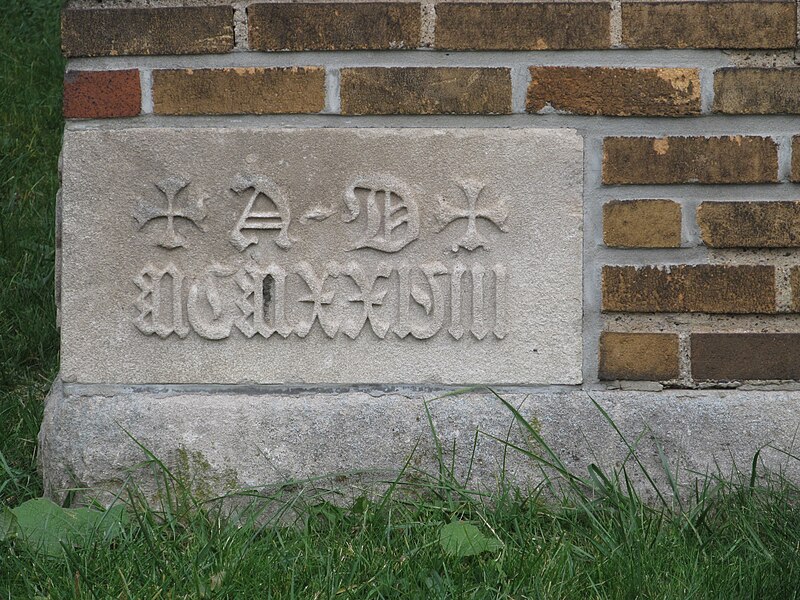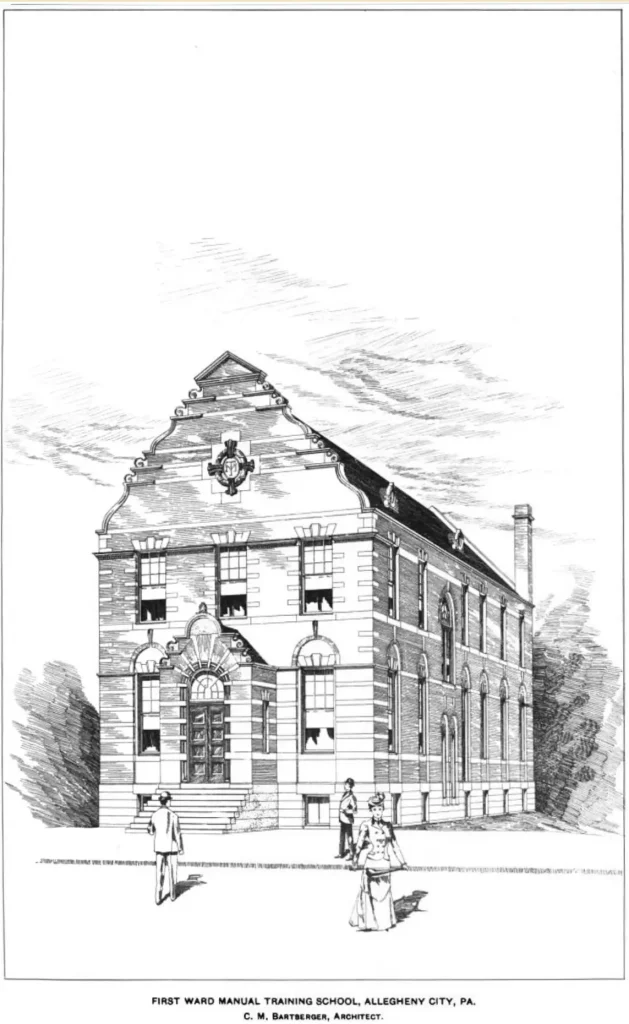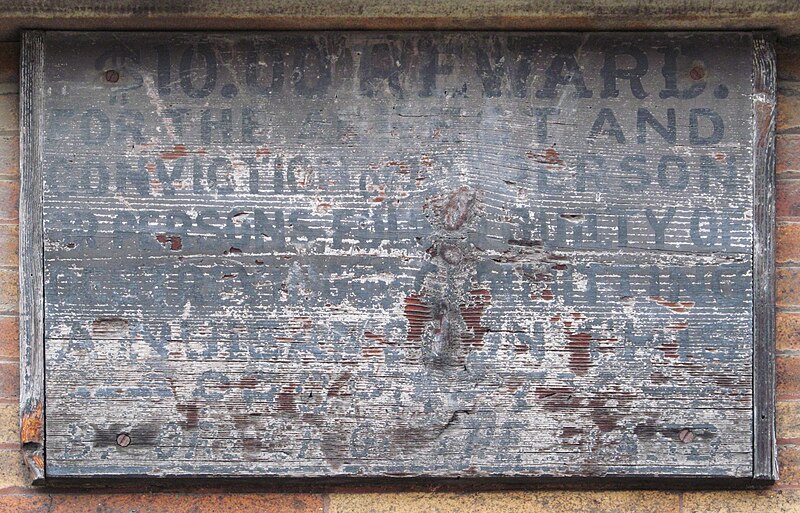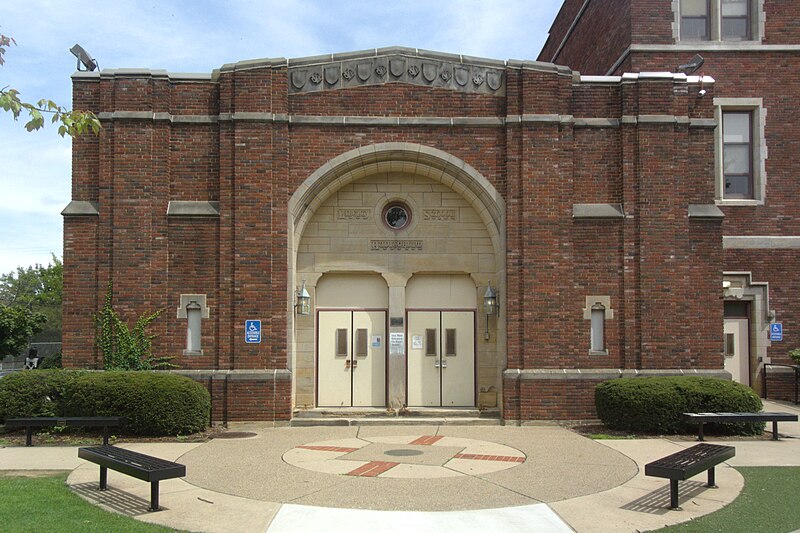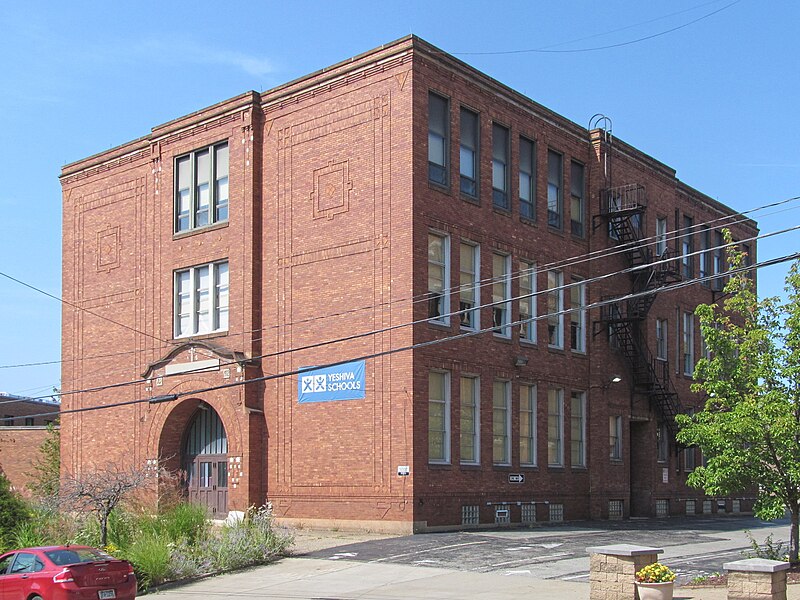
The church and other buildings of the parish are long gone, but this little parochial school is still standing in Esplen, a neighborhood few Pittsburghers ever think of. For a while the building belonged to a nondenominational church, but that does not seem to be active anymore. We hope the building can be preserved, since it is one of the few substantial structures in what is otherwise a neighborhood of frame houses and, increasingly, vacant lots.



This cross looks like an afterthought, as though someone worried that the building looked too much like a conventional public school—which it does—and decided that something had to be done to distinguish it as Catholic.

A later addition included a porte cochère, which must have been a blessing to pupils arriving by car in the rain. It bears unconscious testimony to the facts of religious life in the later twentieth century: increasingly, ethnic parishes were no longer serving parishioners in their own neighborhoods (all of Esplen is within walking distance of this school), but rather people who had moved to the suburbs and had to drive in to church or school. The next obvious step is that they stop driving in to church or school, and find themselves a parish in the suburbs.


